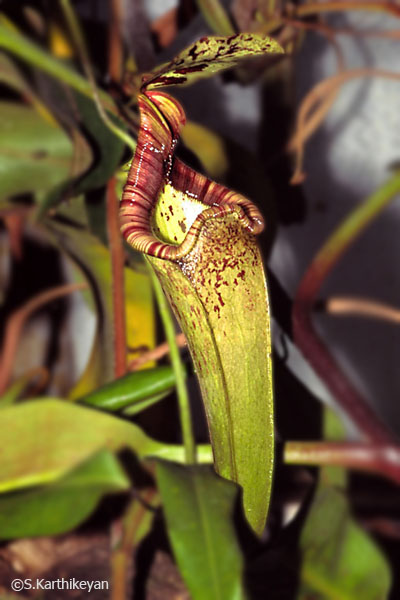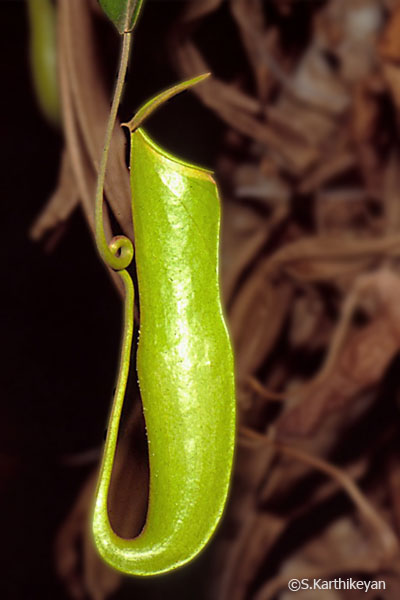We all know that animals depend on plants for their food. But have you ever heard of plants that feed on animals? Yes, that’s what Pitcher plants are all about! These plants feed largely on small animals like insects, scorpions and at times even mice!
Most pitcher plants are climbers with some of their leaves modified into pitchers. A pitcher is a container with a hood over it. The hood, the rim and the inner wall of the pitcher are often attractively coloured. Even as the pitcher is formed, it contains a clear liquid. The pitchers of the different species of these plants vary in shape and size.

Nepenthes sp.
The nectar producing glands are scattered along the rim of the pitcher and needless to say are very inviting to insects. The unsuspecting insects come to the pitcher to feed on the nectar and often stray away from these glands into the pitcher. The pitchers are designed to assist movement of the prey downwards while offering little help for upward movement!
The prey moves closer to the liquid, finally falling into it having lost its foothold. Digestive acids and enzymes are secreted to breakdown the proteins. The end product of digestion provides the plant with the much needed nitrogen which is absorbed by the walls of the pitcher.
Pitcher plants are found in the Asian tropics. They occur in India, Malaysia, South-east Asia and Queensland in Australia. They are also found in Ceylon and Madagascar. Of the sixty or so known species, India has only one representative of the pitcher plant, Nepenthes khasiana. A sanctuary has been set up for the conservation of this endemic plant in the north-eastern state of Meghalaya.

Nepenthes khasiana